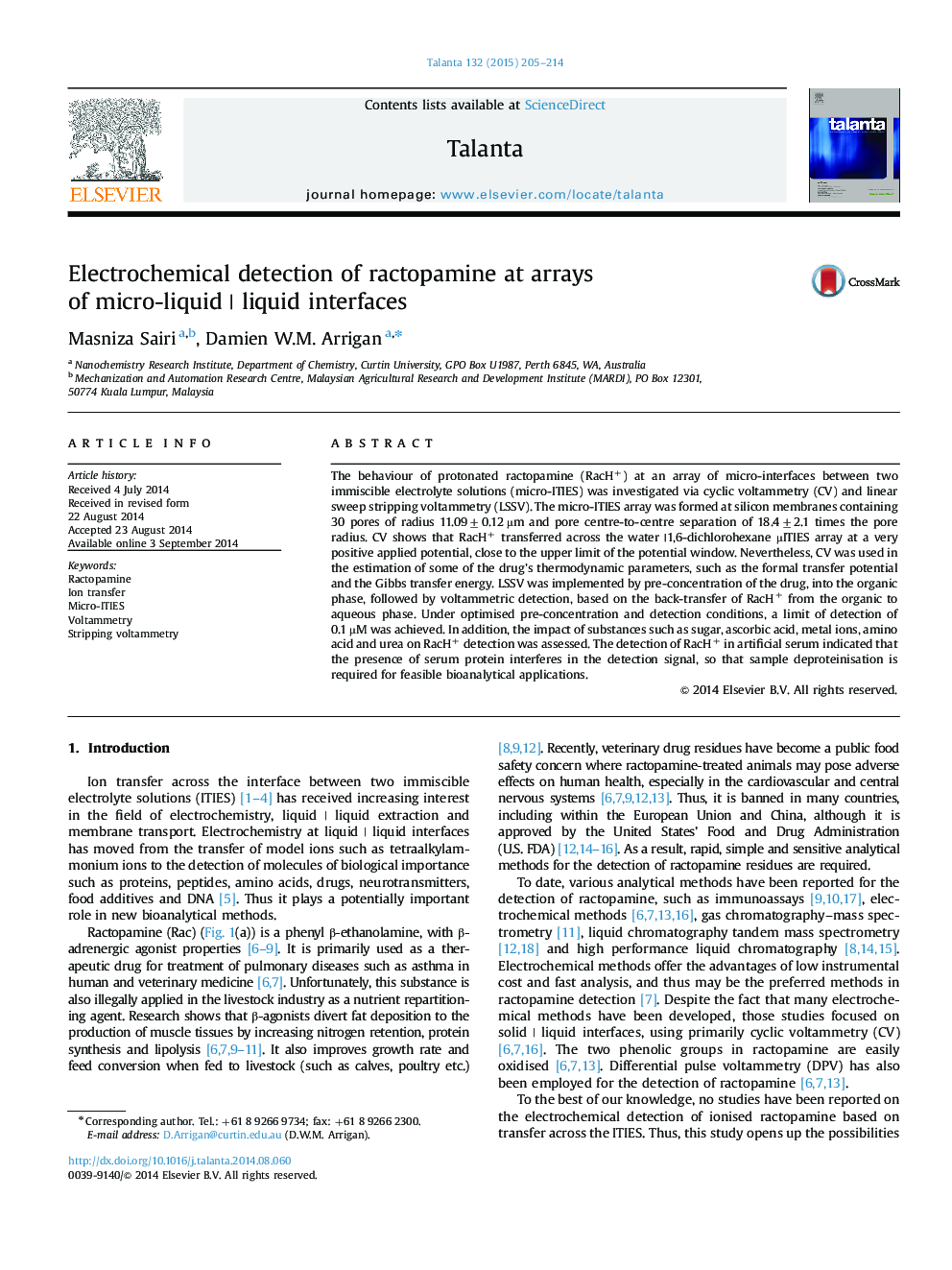| کد مقاله | کد نشریه | سال انتشار | مقاله انگلیسی | نسخه تمام متن |
|---|---|---|---|---|
| 1242008 | 1495803 | 2015 | 10 صفحه PDF | دانلود رایگان |
• Ion-transfer voltammetry of ractopamine RacH+ at µITIES array was studied.
• RacH+ transferred close to the upper limit of the potential window.
• The drug’s half-wave potential and other thermodynamic parameters were determined.
• Detection limit of 0.1 µM was achieved by stripping voltammetry.
• Impact of interfering substances and serum protein was evaluated.
The behaviour of protonated ractopamine (RacH+) at an array of micro-interfaces between two immiscible electrolyte solutions (micro-ITIES) was investigated via cyclic voltammetry (CV) and linear sweep stripping voltammetry (LSSV). The micro-ITIES array was formed at silicon membranes containing 30 pores of radius 11.09±0.12 µm and pore centre-to-centre separation of 18.4±2.1 times the pore radius. CV shows that RacH+ transferred across the water |1,6-dichlorohexane µITIES array at a very positive applied potential, close to the upper limit of the potential window. Nevertheless, CV was used in the estimation of some of the drug’s thermodynamic parameters, such as the formal transfer potential and the Gibbs transfer energy. LSSV was implemented by pre-concentration of the drug, into the organic phase, followed by voltammetric detection, based on the back-transfer of RacH+ from the organic to aqueous phase. Under optimised pre-concentration and detection conditions, a limit of detection of 0.1 µM was achieved. In addition, the impact of substances such as sugar, ascorbic acid, metal ions, amino acid and urea on RacH+ detection was assessed. The detection of RacH+ in artificial serum indicated that the presence of serum protein interferes in the detection signal, so that sample deproteinisation is required for feasible bioanalytical applications.
Figure optionsDownload as PowerPoint slide
Journal: Talanta - Volume 132, 15 January 2015, Pages 205–214
